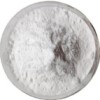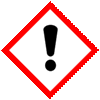6-Hydroxy-3,4-dihydroquinolin-2(1H)-one or 6-Hydroxy-2-oxo-1,2,3,4-tetrahydroquinoline Manufacturers, with SDS GHS MSDS Sheet |
Supplier, Manufacturer, Exporter of 6-Hydroxy-3,4-dihydroquinolin-2(1H)-one or 6-Hydroxy-2-oxo-1,2,3,4-tetrahydroquinoline, Muby Chemicals of Mubychem Group, established in 1976, is the original manufacturers of Specialty Chemicals, Pharmaceutical Excipient, Fragrance Food & Flavor chemicals, Reagent Grade Chemicals, Shale Gas Fracturing Chemicals in India. Mubychem Group has several manufacturing facilities spread across Western India and world wide contacts and toll manufacturers. We are exporting globally to countries like USA, Canada, Europe, UAE, South Africa, Tanzania, Kenya, Egypt, Nigeria, Cameroon, Uganda, Turkey, Mexico, Brazil, Chile, Argentina, Dubai, Korea, Vietnam, Thailand, Malaysia, Indonesia, Australia, China, Germany, France, Italy Portugal, Bangladesh, etc. The products are offered as per required specifications and in correct shape and size in mm or meshs or microns as specified by the buyer. The participating units have one or more accreditations like FDA - cGMP and GLP approval, ISO-9001 Certified, "REACH" Registered, ISO-14001, ISO/IEC 17025, ISO-22000, FSSC 22000, ISO 45001, Kosher Certified, Halal Certified, HACCP, FSSAI. We offer Commercial Pure & IP BP EP Ph Eur USP NF JP FCC Food Grade Analytical Reagent Grades of Chemicals |
| Bookmark this Web Site -- or -- Email This Page Info to a Colleague or Yourself |
Search our website here:







6-Hydroxy-3,4-dihydroquinolin-2(1H)-one or 6-Hydroxy-2-oxo-1,2,3,4-tetrahydroquinoline CAS Number 54197-66-9, EINECS EC Number: 611-111-4, Molecular Formula: C9H9NO2, Molecular Weight: 163.17, HS Code 29334900 or 29337900
How big is your requirement or how small
We serve it all.
Specifications, Safety Data Sheet, Manufacturing process details, Wholesale retail buy sell prices, Uses etc available on line in these pages for 6-Hydroxy-3,4-dihydroquinolin-2(1H)-one or 6-Hydroxy-2-oxo-1,2,3,4-tetrahydroquinoline or 3,4-Dihydro-6-hydroxy-carbostyril.
For SDS MSDS Sheet Click
SDS MSDS Sheet of 6-Hydroxy-3,4-dihydroquinolin-2(1H)-one or 6-Hydroxy-2-oxo-1,2,3,4-tetrahydroquinoline Manufacturers
6-Hydroxy-3,4-dihydroquinolin-2(1H)-one
6-Hydroxy-2-oxo-1,2,3,4-tetrahydroquinoline or 3,4-Dihydro-6-hydroxy-carbostyril Suppliers

General Properties and Specifications of 6-Hydroxy-3,4-dihydroquinolin-2(1H)-one or 6-Hydroxy-2-oxo-1,2,3,4-tetrahydroquinoline or 3,4-Dihydro-6-hydroxy-carbostyril:
Appearance: White to beige powder or crystals.
Assay: 98% minimum.
Melting Point: 236C to 240C.
Storage: Sealed in refrigerator. OK to freeze.
We also manufacture and supply as under:
Dihydroxyaluminum Aminoacetate
7-Hydroxy-3,4-dihydroquinolin-2(1H)-one
6-Hydroxy-3,4-dihydroquinolin-2(1H)-one or 6-Hydroxy-2-oxo-1,2,3,4-tetrahydroquinoline.
Manufacturers:
MUBY CHEMICALS
Ambernath Mumbai, Ankleshwar Gujarat, India
TEL: (OFFICE) +912223770100, +912223726950
Current Date Time in India GMT+5:30
e-mail: info@mubychem.com
USA, Canada, Mexico and other American neighbouring buyers may
e-mail: us@mubychem.com
Call toll-free 1-877-682-9243 (1-877-MUBYCHEM)

Copyright and Usual Disclaimer is Applicable.
Last 3 January, 2026




Exporters to USA Canada UAE Europe South Africa Tanzania Kenya Uganda Egypt Nigeria Turkey Mexico Brazil Argentina Chile Dubai etc.
Global or International Suppliers, Exporters, Importers, Manufacturers
I shall pass through this world, but once. If therefore, there is any good that I can do, or if there is any favor that I can show to a fellow human being, let me do it now. Let me not defer or neglect it. For I shall not tread this way again
6-Hydroxy-3,4-dihydroquinolin-2(1H)-one or 6-Hydroxy-2-oxo-1,2,3,4-tetrahydroquinoline or 3,4-Dihydro-6-hydroxy-carbostyril SDS, Safety Data Sheet
MSDS Sheet, Material Safety Data Sheet 30-Dec-23
1. Product Identification
Product Name & Other Names: 6-Hydroxy-3,4-dihydroquinolin-2(1H)-one or 6-Hydroxy-2-oxo-1,2,3,4-tetrahydroquinoline or 3,4-Dihydro-6-hydroxy-carbostyril.
CAS No.: 54197-66-9
EINECS, EC Number: 611-111-4
Molecular Weight: 163.17
Molecular Formula: C9H9NO2
Relevant uses and uses advised against (if any): Industrial Manufacturing.
Supplier: As per letterhead.
2. Hazards Identification
GHS, Globally Harmonized System Classification in accordance with 29 CFR 1910
Classification according to Regulation (EC) No 1272/2008
Skin corrosion/irritation Category 2, H315
Serious eye damage/eye irritation Category 2A, H319
Specific target organ toxicity, single exposure; Respiratory tract irritation Category 3, H335
Labelling according to GHS & Regulation (EC) No 1272/2008
GHS Label Elements  Irritant |
Signal Words: Warning
Hazard statements:
H315: Causes skin irritation.
H319: Causes serious eye irritation.
H335: May cause respiratory irritation.
Precautionary statements:
P262: Do not get in eyes, on skin, or on clothing.
P264: Wash skin thoroughly after handling.
P280: Wear protective gloves/protective clothing/eye protection/face protection.
P302+P352-IF ON SKIN: Wash with plenty of soap and water.
P304+P340: IF INHALED: Remove victim to fresh air and keep at rest in a position comfortable for breathing.
P305+351+338: IF IN EYES: Rinse cautiously with water for several minutes. Remove contact lenses if present and easy to do – continue rinsing.
P332+313: If skin irritation occurs: Get medical advice/attention.
P337+P313: If eye irritation persists: Get medical advice/ attention.
P362: Take off contaminated clothing and wash before reuse.
P501: Dispose of contents/container in accordance with local/regional/national/international regulations.
Classification according to EU Directives 67/548/EEC or 1999/45/EC:
Hazard Symbol:
Xi Irritant
Risk Phrases:
R36/37/38 Irritating to eyes, respiratory system, and skin.
3. Composition/Information on Ingredients
Product Name & Other Names: 6-Hydroxy-3,4-dihydroquinolin-2(1H)-one or 6-Hydroxy-2-oxo-1,2,3,4-tetrahydroquinoline or 3,4-Dihydro-6-hydroxy-carbostyril.
CAS No.: 54197-66-9
EINECS, EC Number: 611-111-4
4. First Aid Measures
Always seek medical attention after first aid measures are provided.
Inhalation: Remove to fresh air. If not breathing, give artificial respiration. If breathing is difficult, give oxygen. Get medical attention.
Ingestion: Never give anything by mouth to an unconscious person. Get medical attention.
Skin Contact: Wipe off excess material from skin then immediately flush skin with plenty of water for at least 15 minutes. Remove contaminated clothing and shoes. Get medical attention. Wash clothing before reuse. Thoroughly clean shoes before reuse.
Eye Contact: Immediately flush eyes with plenty of water for at least 15 minutes, lifting lower and upper eyelids occasionally. Get medical attention immediately.
5. Fire Fighting Measures
Flammability of the Product: Combustible at high temperature.
Auto-Ignition Temperature: NA.
Flammable Limits: Not available.
Products of Combustion: Nitrogen oxides, Carbon dioxide, Carbon monoxide, fumes.
Fire: Flammable in the presence of open flame.
Fire Extinguishing Media: Use water spray, alcohol-resistant foam, dry chemical or carbon dioxide. Avoid heavy water jet. Use any means suitable for extinguishing surrounding fire.
Special Information: Fire-extinguishing work is done from the windward and the suitable fire-extinguishing method according to the surrounding situation is used. Uninvolved persons should evacuate to a safe place. In the event of a fire, wear full protective clothing and NIOSH-approved self-contained breathing apparatus with full face piece operated in the pressure demand or other positive pressure mode. At high temperatures under fire conditions, it may produce toxic or irritating fumes.
6. Accidental Release Measures
Personal precautions, protective equipment, and emergency procedures: Avoid breathing dust/fumes/gas/mist/vapors/spray. Use individual protective equipment (waterproof boots, suitable protective clothing, safety glasses, etc.). Restrict unprotected personnel from the area. Prevent any contact with hot surfaces. Do not approach facing the wind. Do not touch the spilled material.
Environmental precautions: Do not let the product enter drains, soil, or water sources.
Methods and materials used for containment cleanup procedures and Storage:
Small Spill: Avoid dust formation. Avoid breathing dust. Ensure adequate ventilation. Use appropriate tools to put the spilled solid in a convenient waste disposal container. Finish cleaning by spreading water on the contaminated surface and dispose of according to local and regional authority requirements.
Large Spill: Do not inhale dust, vapors, mist, or gas. Avoid dust formation. Contain spilled material. Cover with an inert, non-combustible absorbent material, (e.g., sand, earth, diatomaceous earth, vermiculite). Use a shovel to put the material into a convenient waste disposal container. Finish cleaning by spreading water on the contaminated surface and allow to evacuate as per law.
7. Handling and Storage
Precautions for safe handling: Apply according to good manufacturing and industrial hygiene practices. Ensure proper ventilation. In case of insufficient ventilation, wear suitable respiratory equipment. Wash thoroughly after handling. Do not drink, eat, or smoke while handling. Avoid contact with skin, eyes, and clothing. Minimize dust generation. Avoid breathing dust/fumes/gas/mist/vapors/spray. Avoid contact with eyes, skin, and clothing. Keep container tightly closed. Avoid ingestion and inhalation. Use individual protective equipment (waterproof boots, suitable protective clothing, safety glasses, etc.). Prevent any contact with hot surfaces.
Conditions for safe storage, including any incompatibilities: Store in cool, dry, and ventilated area away from heat sources and protected from sunlight in tightly closed original container. Keep air contact to a minimum. Store protected from heat, sparks and ignition sources and incompatible materials. Avoid contact with skin and eyes. Avoid inhalation of dust/mist/vapor. Do not store with incompatible materials like strong oxidizing agents. Storage: Sealed in refrigerator. OK to freeze. Short term shipping may be ambient.
8. Exposure Controls/Personal Protection
Airborne Exposure Limits: Not Established.
Ventilation System: A system of local and/or general exhaust is recommended to keep employee exposures as low as possible. Local exhaust ventilation is generally preferred because it can control the emissions of the contaminant at its source, preventing dispersion of it into the general work area.
Personal Respirators (NIOSH Approved): For conditions of use where exposure to dust or mist is apparent and engineering controls are not feasible, a particulate respirator may be worn. For emergencies or instances where the exposure levels are not known, use a full-face positive-pressure, air-supplied respirator.
Skin Protection: Wear protective gloves and clean body-covering clothing.
Eye Protection: Use chemical safety goggles and/or full-face shield where dusting or splashing of solutions is possible. Maintain eye wash fountain and quick-drench facilities in work area.
Other Control Measures: Maintain good housekeeping in work area. Handle in accordance with good industrial hygiene and safety practice. Wash hands after handling.
9. Physical and Chemical Properties
Appearance: White to beige powder or crystals.
Odor: Not available.
Odor threshold: Not available.
pH: Not available.
Relative density: Not available.
Melting Point: 236C to 240C.
Initial boiling point and boiling range: Not available.
Flash point: Not available.
Auto-ignition temperature: Not available.
Decomposition temperature: Not available.
Upper/lower flammability or explosive limits: Not available.
Vapor pressure: Not available.
Vapor density: Not available.
Evaporation rate: Not available.
Flammability (solid, gas): Not available.
Partition coefficient: n-octanol/water: Not available.
Solubility: Not available.
Viscosity: Not available.
Molecular Weight: 163.17
Molecular Formula: C9H9NO2
10. Stability and Reactivity
Stability: Stable under recommended conditions of use and storage.
Hazardous Decomposition Products: It emits Oxides of Nitrogen, Carbon dioxide, Carbon monoxide & Fumes.
Hazardous Polymerization: Will not occur.
Incompatibilities: Strong oxidizing agents.
Conditions to Avoid: Incompatibles, heat & direct sunlight.
11. Toxicological Information
Toxicity data: Not available.
Carcinogenic Effects: No component of this product present at levels greater than or equal to 0.1% is identified as probable, possible, or confirmed human carcinogen by IARC.
Reproductive toxicity: Not available.
Germ cell mutagenicity: Not available.
12. Ecological Information
Environmental Fate: Not available.
Environmental Toxicity: Not available.
Persistence and degradability: Not available.
Bioaccumulative potential: Not available.
Mobility in soil: Not available.
Results of PBT and vPvB assessment: Not available.
13. Disposal Considerations
Whatever cannot be saved for recovery or recycling should be managed in an appropriate and approved waste disposal facility. Processing use or contamination of this product may change the waste management options. State and local disposal regulations may differ from federal disposal regulations. Dispose of containers and unused contents in accordance with federal, state, and local requirements.
14. Transport Information
DOT USA, TDG Canada & ADR/RID Europe: Not regulated
IATA: Not regulated
IMDG/IMO: Not regulated.
15. Regulatory Information
USA:
SARA 311/312 Hazards: Immediate Health Hazard. See section 2.
California prop. 65: Contains no chemical subject to California Prop 65.
Section 16 - Additional Information
European Labeling in Accordance with EC Directives:
H315 = Causes skin irritation.
H319 = Causes serious eye irritation.
H335 = May cause respiratory irritation.
Classification according to EU Directives 67/548/EEC or 1999/45/EC:
Hazard Symbol:
Xi Irritant
Risk Phrases:
R36/37/38 Irritating to eyes, respiratory system, and skin.
Disclaimer:
**************************
Our company provides this MSDS sheet in good faith but makes no representation as to its comprehensiveness or accuracy. This SDS sheet is intended only as a guide to the appropriate precautionary handling of the material by a properly trained person using this product. The above information has been compiled from various sources and has the possibility of discrepancy and being out-dated information. Individuals receiving the information must exercise their independent judgment and do further search in determining its appropriateness for a particular purpose. In no case shall our company be liable to loss or damages by the product user.
**************************
















